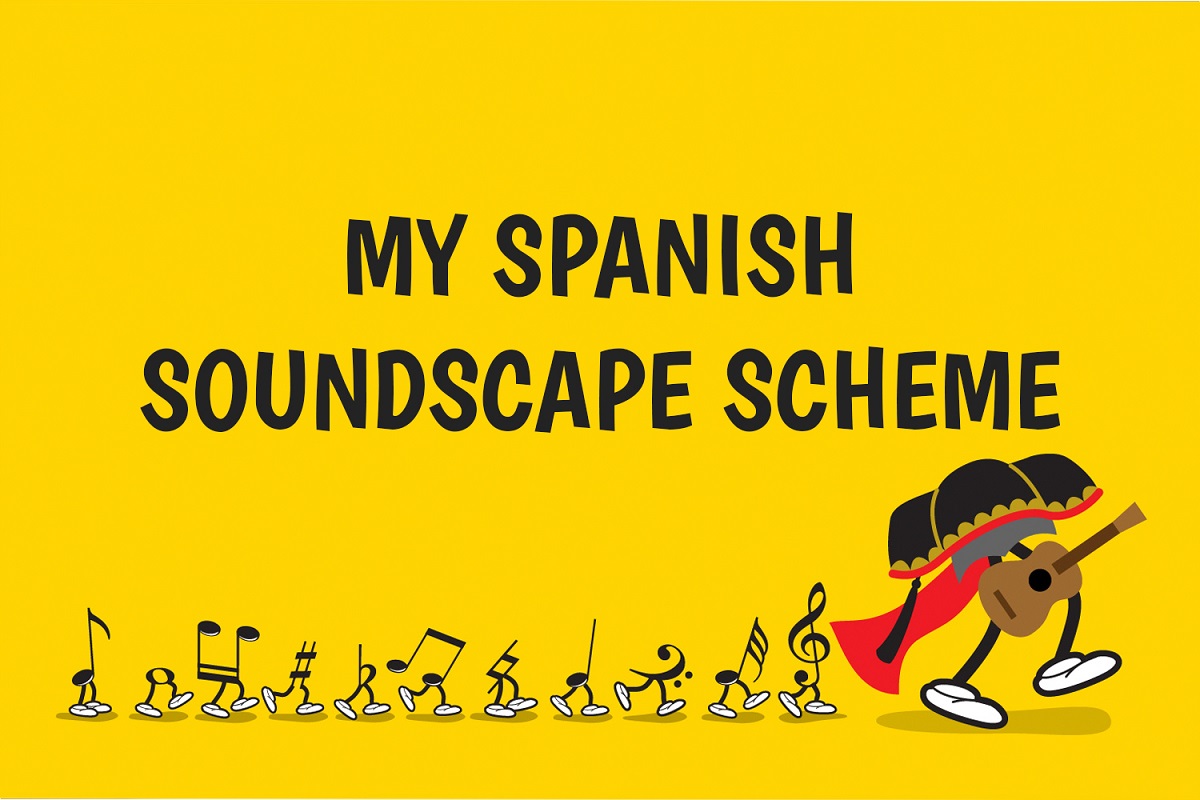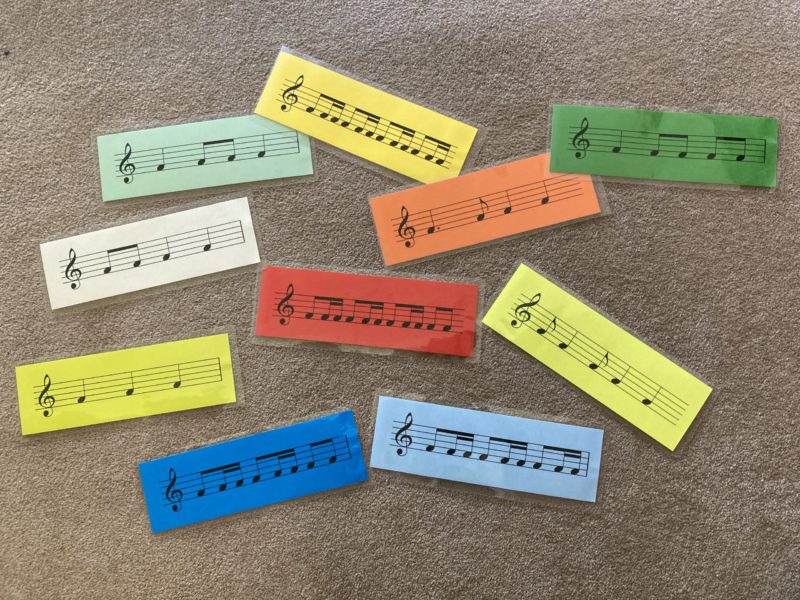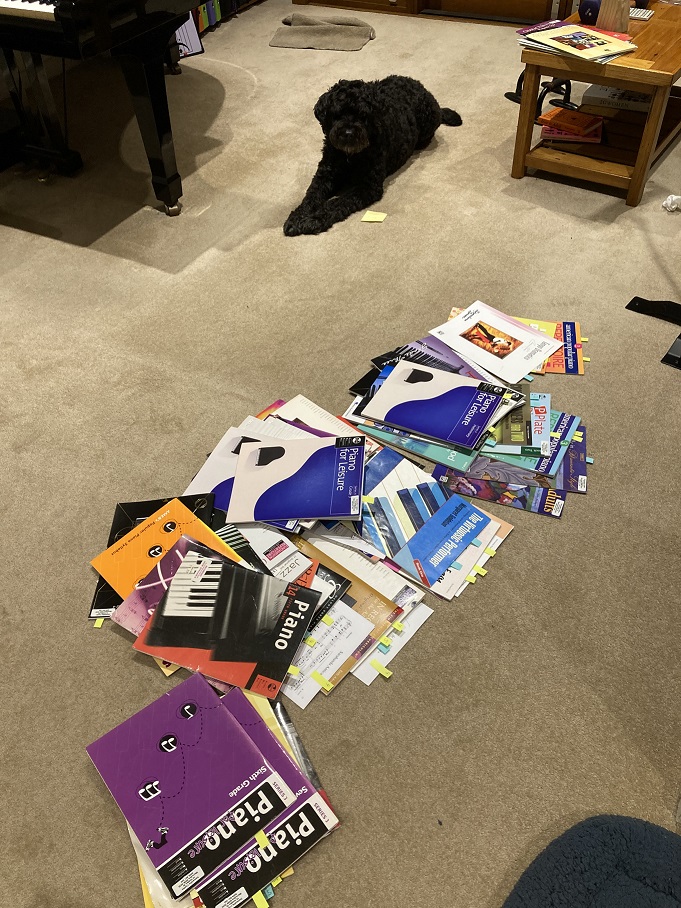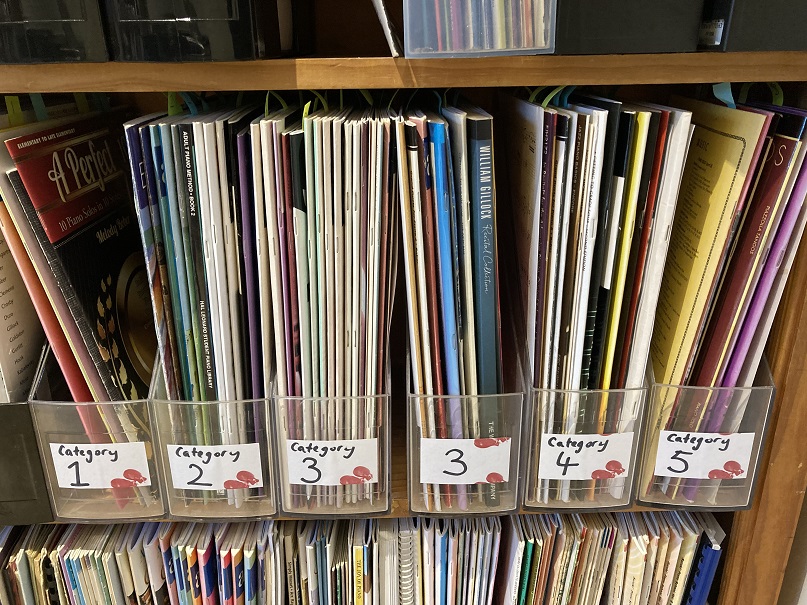My Spanish Soundscape Scheme

This is the tale of how the latest Sydney lockdown has worked to my and my students’ advantage. I was suddenly inspired by the idea of having a Spanish theme for the end of year concert (still two terms away) and I decided to source some themed repertoire. I have just spent the entire school holiday period setting up this project (and feeling super productive 😊), and now I’m very excited to introduce this theme to my students next week (yay!), even though it will have to be online (boo).
Theme: Spanish Soundscape
For many years I have admired how other teachers have a themed recital. It’s a lot of work and takes a great deal of advance planning. But I can now see how and why it is worth it – I think my students are going to love it, so the planning itself feels exciting.
I decided to call the theme ‘Spanish Soundscape’ because it is not about featuring music by Spanish composers, or pieces that are particularly nationalistic; it’s about featuring pieces that explore sounds that are quintessentially Spanish, and discovering the music theory behind what makes them sound this way, as a springboard for improvisation and composition.
Researching the Spanish sound
YouTube was my best friend for a couple of days!1 I found out that the Spanish-sounding-scale I know so well is actually the Spanish Phrygian scale, which is simply the Phrygian mode with a bonus major third. (So cool!) And the resulting chords based on this scale, which often appear in the order iv-III-II-I (minor-major-major-major), is called an Andalusian Cadence! (Who knew?!)
To Tango, or Not to Tango?
The tango is not Spanish, it’s Argentinian. But to leave tangos out of this endeavour seemed such a shame! So I called my frolleague2 Elissa Milne, as I know that she loves tangos and regards them as the ‘minuet of the 21st century’. After a lengthy discussion we decided that a) Argentina was a Spanish colony, so the music IS very Spanish-influenced, and b) since the Habanera is Spanish and is based on a tango rhythm, it counts. So, tangos were in – yay! – which was a relief because there are SO. MANY. TANGOS.
Sourcing and Resourcing
In order to do this project planning and soundscape scheming, I needed more materials; some I needed to buy, some required assembling, and some required laminating!3
Things I Bought
-
- New repertoire (even though I already had a LOT, as you’ll read about below). I scoured music retail websites using search terms like Spanish, Spain, el, malaguena, tango, matador, espanol, and more. I had fun buying lots and lots of pieces, either as hard copies or as digital studio licenses where available. Most of this I will keep in my library and will let students borrow (more about that below), however in some cases I bought multiple copies and will on-sell these to students.
- Castanets. I was horrified by the plethora of toy castanets on eBay and finally sourced some from a music shop. When they arrived I was so delighted with the quality clicking sound I could make even through the Australia Post packaging (much to the amusement of my husband), I immediately ordered a second pair. Now my students and I can do imitation and canon clicking together (yay!) except that doesn’t work online so we will have to wait until lockdown finishes (boo).
Things I Made
- Rhythm flashcards. I printed and laminated them, and they will feature in a variety of games I’m planning, including playing them to backing tracks using the castanets 😊

- Playlists. Spotify also became my new friend! Here is a link to my public profile on Spotify, so that you can access these playlists4. I wanted to have backing tracks for clapping/clicking along, as well as listening activities for identifying Spanish rhythms and the Andalusian Cadence (in pop songs as well as traditional music). When you see my profile you’ll see I’m obsessed with making playlists of various chord progressions – that will be for another blog post!
- Categories for the pieces: labelled magazine holders for hard copies, and category labels in Tonara. The Tonara app was a lifesaver when the pandemic hit last year, but now I can’t live without it as part of my teaching life. Being able to organise/categorise these pieces and assign them through Tonara is awesome, as I can include links to listen, all sort of notes, attachments of studio licensed music, or links to buy.
Assembling the Repertoire
This process involved two of my absolute favourite things – sorting and sight reading.
Scouring the Shelves
I started looking through every repertoire book I owned. This took several days. If you are like me and you buy music regularly, you are probably also like me in that it doesn’t take much to lose track of all the different repertoire you own! So I had a great time not only finding Spanish-sounding pieces but also (re)discovering books and pieces I haven’t used for a long time.
Finding appropriate pieces in the repertoire collections was EASY. All I had to do was look at the table of contents! The titles are dead giveaways: Matador of Spain, Malaguena, Castanets, Spanish Dance, Tango-this, Tango-that. And then, just to double-check, I’d flick through the book and check the rhythms, looking for tango and flamenco. Once again, super easy to spot! Whilst doing this I came across some pieces which had tango in the title but which were actually a Latin rhythm (in which case I ditched that piece), and vice versa. I think Latin will be next year’s theme!
A special shout out to another frolleague Michelle Madder, who give me access to her awesome duet folder on Dropbox. She has arranged some fabulous pieces that fit with the theme (for example, Michael Buble’s Sway) and I can’t wait to play them with my students. She’s working on getting them on to Sheet Music Plus very soon!
Sorting the Pieces
I spent hours and hours playing through all the pieces I had found on my shelves, and all the new pieces I bought online (see below). This is my idea of FUN – sight reading through repertoire with my students in mind, thinking of which pieces are suitable and in what way.
I decided to sort them into five piles on the floor (basically categorizing them into elementary through to advanced), creatively naming them Category 1, Category 2, etc. I ended up with quite a selection in each, at least 15-20 pieces to choose from, and Nobby most definitely approved.

This photo doesn’t accurately reflect all the repertoire I’ve chosen, because I not only do I still have lots on order, there are many digital pieces/collections that I haven’t bothered to print out (I can attach them for my students in Tonara).
I’ve got all the hard copies set up as a lending library on my bookshelf, with each category tantalizingly set out5:

Examples of Category 1 pieces:
- Span-ish, Twisted Tango and Olé, all from my Rote Repertoire series
- Tango from Little Gems by Paula Dreyer
Examples of Category 2 pieces:
• Malagueña arranged by Hans-Gunter Heumann
• Spanish Dance from Piano Safari
… and so on. I am positive my students will be excited to progress through each category, and I can’t wait for someone to reach my absolute favourite newly-discovered piece, Tango Argentino by Kevin Olson, which I’ve put into Category 4.
List of Pieces
If you are interested, here is the list of all of my Spanish soundscape pieces so far. Some things to note, before you dive in:
- The majority of my students are intermediate level, so you’ll see that the ‘advanced’ pieces listed in Category 5 are around 6th-8th grade level, or what some might consider ‘early advanced’. I haven’t bothered listing the super hard stuff.
- If I played through pieces by a Spanish composer or with Spanish/Spain in the title but found that those piece didn’t feature a Spanish soundscape, occasionally I chose to omit them. The only exception to this was a little ‘Spanish Dance’ by Czerny, as I can think of at least one student who will revel in the inclusion of a classical-style piece.
- After some deliberation, I decided to include some Sarabandes. The Spanish origin is represented more by the ornamentation than the harmonies, but including them will be an excellent educational point and will also provide a little break from said harmonies!6
The list is still growing because there is more music arriving in the mail, and if you know of any other great Spanish-sounding pieces you think should be included, please email me!
Lending Library
Students will borrow my hard copies where studio licenses are not available. I will *strongly* encourage them to learn the pieces quickly and give the book back, so they can borrow a different one! Once they hit the ‘goldilocks’ level i.e. pieces that are not too easy, not too hard, I will be recommending repertoire to purchase, for that level and beyond.7
Students will be able to choose pieces based on my recommendations and whether they like the sound, but this will also be dependent on the availability of the piece in the lending library.
The ‘Scheme’
I wanted some structure to this endeavour, and for students to experience a sense of progress. (This makes it way more fun!)
Everyone has to play at least five pieces from a category (I’ve got at least 10 pieces in each category, for them to choose from) before ‘levelling up’. My vision is that every student will start in Category 1 and must play at least five pieces at a competent level before they move on to Category 2, and then the same before moving on again (they might also choose not to move ‘up’ but stay on a particular level, which is fine!).8
There are two important bonuses to having everyone start in Category 1:
- Students will learn lots of pieces and this counts towards the 40-piece challenge they are doing this year
- When we get to the end of year concert, everyone will have heard/played most of the pieces, and it is SO much easier to appreciate music when you have heard it or played it already!
The Best Part: Creating Original Spanish Soundscapes
Now that I’m all prepped to teach my students about Spanish Phrygian scales and Andalusian Cadences, the first thing I’ll be doing is getting them to improvise with Spanish scale patterns and chord progressions. We will do this duet-style as soon as we’re in person! I’m also imagining a three-pronged approach with composition:
- Create an original piece or song, first by experimenting with improvisation and then by gradually adding and formalising ideas. They might be inspired by a piece they are playing, which is how I approach composition (the ‘Level 4’ approach) in my repertoire series.
- Analyse their pieces and identify the Spanish elements. What would happen if we changed the chords? Would it still sound Spanish? They could create a non-Spanish-sounding arrangement of the piece.
- Revisit a previously learned piece (not Spanish), and change the harmonies and scale patterns based on what they’ve learned about the Spanish soundscape. They can learn how to Spanish-ify any piece in this way!
It is my vision that students will play their compositions/arrangements at the end of year concert, as well as a repertoire piece of their choice. And I’m also going to ask everyone to dress up! Parents included! Since some people find fancy dress stressful, I thought I’d make it very easy and accessible by saying that everyone should come wearing ‘a splash of Spain’. What do you think?
So that’s it! All that remains is for term to begin, and off we will go on our Spanish Soundscape adventure. I’m excited!
P.S. As a thank you for getting to the end of this super-long blog post, here is your link for 50% off Olé! from my Rote Repertoire series. Olé! also features as part of the Sampler Subscription packages, which are super economical.
- Researching these things led me down a bit of a YouTube rabbit hole and I ended up subscribing to YouTube Premium. The ability to click on a video and have it just play… no ads… is incredible. I only realise now how stressful the ads were!
- Frolleague = friend + colleague, a newly discovered and favourit-ed term that must be credited to another frolleague, Naomi Crellin
- I love laminating stuff.
- ‘Follow’ them so that you’ll see any updates, and feel free to message me with suggestions for inclusions!
- See the little pictures on the labels? They are castanets, but my husband thought they were boxing gloves.
- Will I be completely over these harmonies after a couple of weeks?
- For studio licenses that I have purchased, I simply give these to students for free. I have incorporated the ongoing cost of buying repertoire into my fees. However, I know many teachers who charge a yearly resource fee, and this works very well too.
- Category 1 pieces are easy, and I imagine my late intermediate/advanced students will be able to sight read and master them in the lesson, and then move to Category 2 straight away!

I enjoyed reading about your “Spanish” journey and how you developed this new initiative. I also enjoyed the webinar very much and found it useful.
Thanks Lenore, I’m delighted!
Isn’t it amazing how much “behind the scenes” work there is especially when it comes to planning for a theme? Well done! 🙂
You are so right Jennifer! And thanks 🙂
This is such a great idea. Thank you very much for sharing it, and for sharing all the knowledge you gained along the way. It takes such a long time to do all of this. I am really looking forward to doing something similar in my own studio.
A pleasure, Erin! Let me know how it goes!
I love Spanish music and have often wondered what it is that makes it sound Spanish. Thank you, I will definitely look into this! 😆💃🏻
Yay!